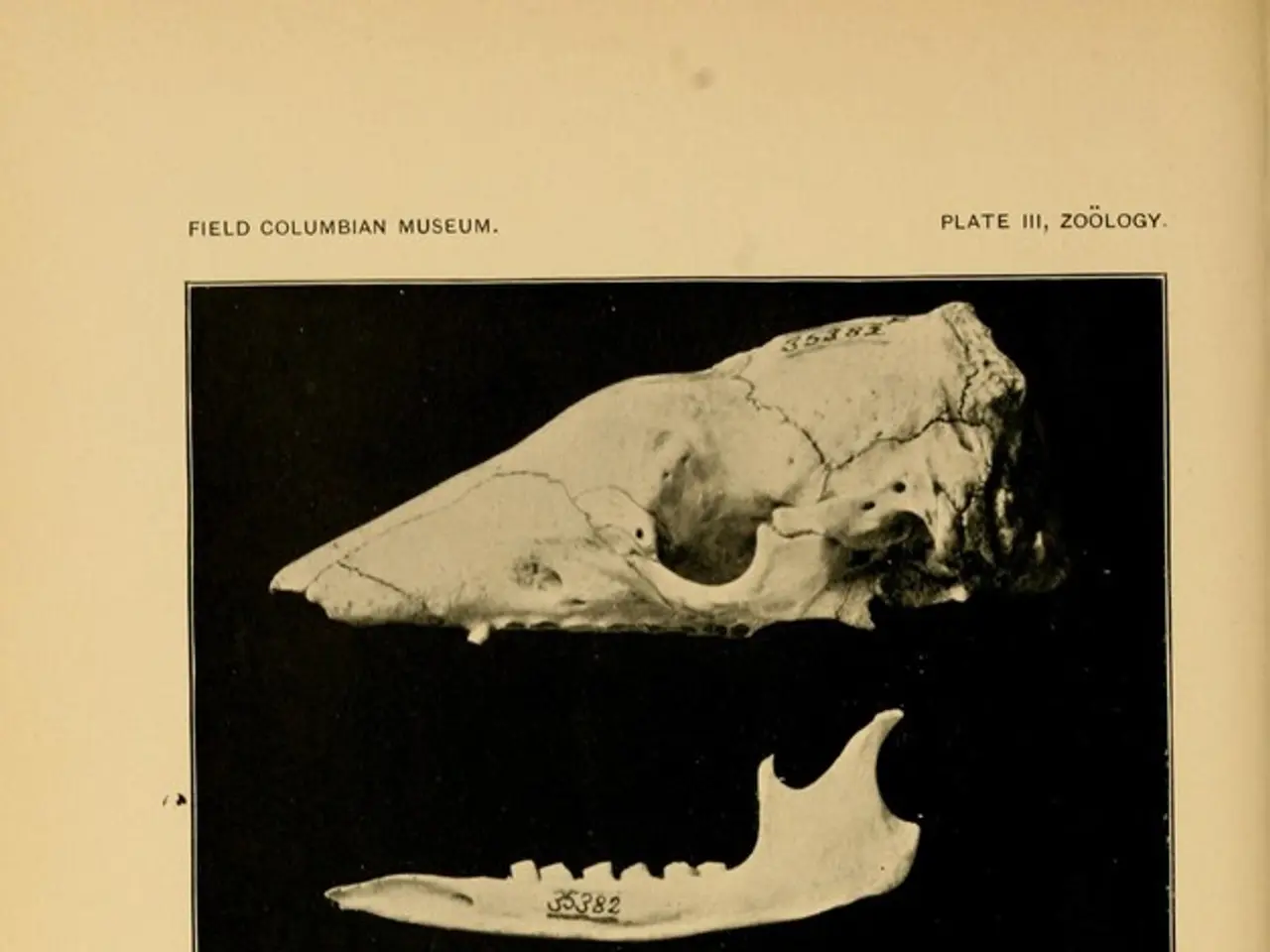Unconventional Signs and Remedies for Ankylosing Spondylitis
Ankylosing spondylitis (AS), a type of inflammatory arthritis, is often associated with lower back pain and stiffness. However, this condition can present with a variety of uncommon or surprising symptoms that may be easy to overlook.
Pain and inflammation in other joints, such as hips, shoulders, knees, ankles, ribs, and sacroiliac joints, can cause pain, stiffness, swelling, or tenderness. This is due to the disease affecting the entire body and not just the spine.
Enthesitis, inflammation at sites where tendons or ligaments attach to bones, is another common symptom. The heel or sole, for example, may experience inflammation leading to conditions like plantar fasciitis or Achilles’ tendinopathy.
Extraarticular manifestations, affecting various organs, are also a feature of AS. Eye inflammation (uveitis) occurs in approximately 25-26% of patients, causing redness, pain, and sensitivity to light. Inflammatory bowel disease (IBD) develops in about 6-7% of patients, potentially causing abdominal pain and diarrhea. Skin psoriasis affects around 9% of those with AS, leading to scaly, patchy skin rashes. Cardiac complications and lung involvement can also occur, potentially causing breathing difficulties over time.
Systemic symptoms such as fatigue, weight loss, and low-grade fever reflect the systemic inflammatory nature of the disease. Rare neurological complications like cauda equina syndrome, presenting as neurological symptoms like numbness or bladder changes due to nerve compression, may also occur.
Osteoporosis and increased fracture risk are long-term complications of AS due to bone weakening beyond spinal fusion.
It is important to note that AS may increase the likelihood of developing irritable bowel syndrome (IBS). Enthesitis in people with AS can cause pain and stiffness in the Achilles tendon, limiting mobility. Loss of appetite may be an early sign of AS.
Early recognition of these signs beyond lower back pain is critical for timely diagnosis and management. If you have concerns about AS or begin to experience new symptoms, it is best to inform your doctor who will be able to advise on suitable treatments for each symptom that occurs.
[1] National Institute of Arthritis and Musculoskeletal and Skin Diseases. (2021). Ankylosing Spondylitis. https://www.niams.nih.gov/health-topics/ankylosing-spondylitis [2] Mayo Clinic. (2021). Ankylosing spondylitis. https://www.mayoclinic.org/diseases-conditions/ankylosing-spondylitis/symptoms-causes/syc-20356570 [3] American College of Rheumatology. (2021). Ankylosing Spondylitis. https://www.rheumatology.org/I-Am-A/Patient-Caregiver/Diseases-Conditions/Ankylosing-Spondylitis [4] Spondylitis Association of America. (2021). What is Ankylosing Spondylitis? https://www.spondylitis.org/understanding-as/what-is-ankylosing-spondylitis/
- Ankylosing spondylitis (AS), a type of inflammatory arthritis, can lead to pain and stiffness in joints like hips, shoulders, knees, ankles, ribs, and the sacroiliac joints.
- Enthesitis, inflammation at the sites where tendons or ligaments attach to bones, is common in AS, which may cause conditions like plantar fasciitis or Achilles’ tendinopathy in the heel or sole.
- Extraarticular manifestations, such as eye inflammation (uveitis), can affect around 25-26% of patients with AS, resulting in redness, pain, and sensitivity to light.
- Inflammatory bowel disease (IBD) can develop in about 6-7% of AS patients, leading to abdominal pain and diarrhea.
- Skin psoriasis affects around 9% of those with AS, resulting in scaly, patchy skin rashes.
- Cardiac complications and lung involvement can occur in AS, potentially causing breathing difficulties over time.
- Systemic symptoms like fatigue, weight loss, and low-grade fever are indicative of the disease's systemic inflammatory nature.
- Rare neurological complications like cauda equina syndrome, presenting as neurological symptoms and bladder changes due to nerve compression, can occur in AS.
- Osteoporosis and increased fracture risk are long-term complications of AS due to bone weakening beyond spinal fusion.
- AS may increase the likelihood of developing irritable bowel syndrome (IBS).
- Enthesitis in people with AS can cause pain and stiffness in the Achilles tendon, limiting mobility.
- Loss of appetite may be an early sign of AS.
- Early recognition of these signs beyond lower back pain is critical for timely diagnosis and management.
- If you have concerns about AS or begin to experience new symptoms, it is best to inform your doctor who will be able to advise on suitable treatments for each symptom that occurs.
- Visiting the National Institute of Arthritis and Musculoskeletal and Skin Diseases (NIAMS) website can provide more information about AS. [1]
- The Mayo Clinic's website also offers comprehensive information on AS and its symptoms. [2]
- The American College of Rheumatology provides resources and guidance for patients with AS. [3]
- The Spondylitis Association of America offers educational materials and support for people with AS and their families. [4]
- Chronic kidney disease, COPD, type 2 diabetes, cance (cancer), respiratory conditions, digestive health issues, eye health concerns, and hearing problems are among the many chronic diseases and health conditions managed through workplace-wellness programs.
- Mental health, men's health, women's health, family health, Alzheimer's disease, autoimmune disorders, migraine, and neurological disorders are other important areas of focus in healthcare and medical research.
- A healthy diet, fitness and exercise, skin care, therapies and treatments, nutrition, weight management, multiple sclerosis, and cardiovascular health are all vital aspects of overall health and wellness.




